

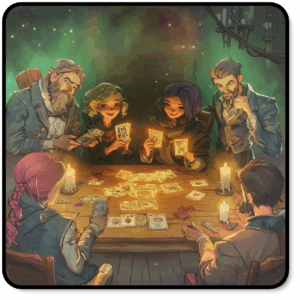
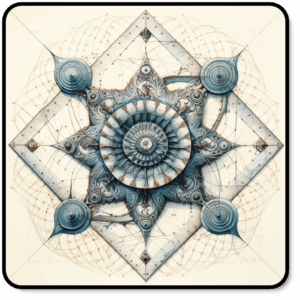



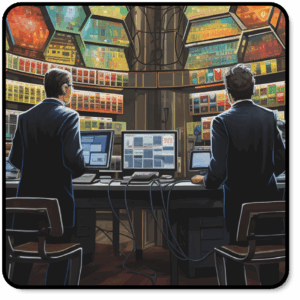


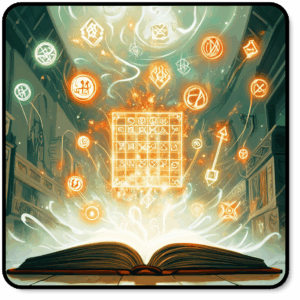
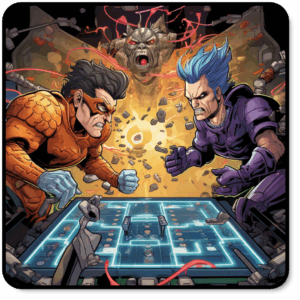
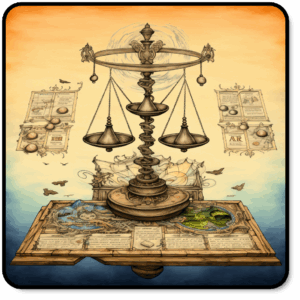





Perfect Balance
Mechanics
Moving Multiple Units • Roll / Spin and Move • Solo / Solitaire Game
Game Overview
Core Concept:
Perfect Balance is a 2-player abstract strategy game of precision, influence, and timing. Players attempt to guide their pieces into a safe zone on their side of the board – all while contending with a dynamic system where one move can affect up to four other pieces. Control the chaos, plan your placements, and maintain perfect balance before your opponent does.
Key Systems:
- Grid-Based Board with Color Columns:
- The board is an 8×11 grid where each column is a different color.
- All pieces begin in a central zone. Each player is responsible for 4 of the 8 colors.
- Roll/Spin and Move Resolution:
- Each turn, a player rolls 8 movement dice to determine whether a selected piece moves forward or backward on the grid.
- Players, one at a time, select a die from the pool and apply it to one of their pieces.
- Due to defined connections one piece’s movement may trigger chain reactions across the board.
- Column Assignment and Linked Movement:
- Each round, a new card is drawn assigning inter-dependencies between color columns.
- Moving a piece in one column may also cause movement in the linked column – creating cascading effects across the board.
- Players must adapt to shifting link rules that change how columns interact.
Design Principles:
- Indirect Control: Players can only move one piece, but chain reactions make each decision multi-layered.
- Balance vs. Aggression: Overreaching can knock your own pieces back to the center – precise is everything.
- Ever-Shifting Logic: With column connections added each round, the puzzle evolves turn by turn.
Endgame Structure:
- Trigger: The game ends when any player successfully moves all four of their assigned colors into their safe zone.
- Penalty: If a piece moves past the edge of the board, it is reset to the center.
- Victory Condition: First player to get all of their pieces to their safe zone wins.
Future Expansion Ideas:
- Modular Link Cards: Add more complex column relationships or cross-link multiple columns simultaneously.
- Advanced Movement Dice: Include special dice that allow diagonal motion, swaps, or double moves.
- Asymmetrical Control: Give players unique abilities tied to their assigned color sets (e.g., one color ignores backward movement).
